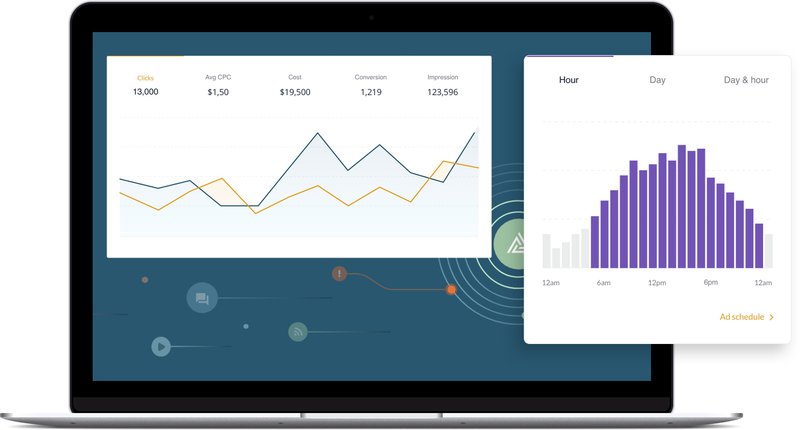
Data is the currency of our time. There is an incredible amount of information that can be gleaned from customer behavior analytics, and it’s precisely why companies like Google and Facebook look to this data to see what their users are up to. Big corporations use data-driven insights to set advertising prices, gain more users, entice shareholders, and improve their bottom line.
It’s not just big companies that rely on customer behavior analytics to increase profits and enhance customer retention, however. With that in mind, below we’ll explore ways in which you can use your customer’s own data to delight them within your applications and programs.
Customer Analytics Give Your End-Users Insights into Their Business
Customer-facing metrics or customer-facing analytics are basically reports and dashboards that are native to your application, built for your end-users point of view. These analytics tell your end-user key information related to performance and usage that can help them make more informed decisions in their business.
For example, suppose you’ve developed an application that helps companies analyze their marketing efforts by monitoring a few events that indicate what is leading visitors to their sales pages. Let’s say the platforms being used for marketing are Facebook, Twitter, guest-blogging, and email. Building an embedded analytics dashboard within your application can tell your end-user which of these marketing methods are yielding the best results in real-time. Armed with that information they can make a data-driven decision as to whether or not to double down on the methods that are working best. What they learn from the data reports could lead them to optimize or abandon those marketing methods that are yielding lackluster results.
Customer behavior analytics can also tell a company how they are doing financially, and enable them to predict how their revenue and growth will look for the foreseeable future. In fact, depending on the metrics you include in your dashboards, you can break down income reports by day, week, month, or year if you choose to. If the data indicates that sales are up and customer retention is steady, your end-users customer knows things are going well. On the flip side, if sales and customer retention are down, the company knows they have work to do.
Customer analytics, depending on the metrics your application monitors and reports on, can also provide information related to the demographics of buyers, time of day they are most likely to purchase, method of payment most frequently used, and much more. The bottom line is, the more information a company has, the easier it will be for them to make decisions and take actions that can impact their overall success.

Companies Prefer Embedded Analytics For Efficiency
One of the biggest reasons companies prefer to have access to embedded analytics within the applications they are using is that they can analyze data without having to toggle to another application. Most people don’t want to open several programs, gather data, sort it, and then examine it themselves. It can be confusing, and far too time-consuming. Having all of the relevant information within one workspace enables them to be more efficient, and organized.
Your end-users are already gathering mountains of data typically related to processes like sales lead conversions, marketing campaign optimization, financial budgeting, and inventory planning. The goal is to understand exactly what metrics your end-user wants to see and provide it in a visually understandable way. In other words, create a custom solution that makes their own data work in your benefit.
By providing your end-user with a visual representation of their own data, you can enjoy increased customer engagement and retention of your own software. You may also have more chances for cross-sells and/or upsells as well as more conversions from visitors to customers. Customer behavior analytics highlight your product’s value, and your customers want easy to understand dashboards and reports. Why not give the people what they want?
Check out our post “8 Ways to Utilize Customer Facing Metrics to Drive Product Success” for industry examples of how tracking and reporting on customer behavior analytics can benefit both the software developer and the end-user.



